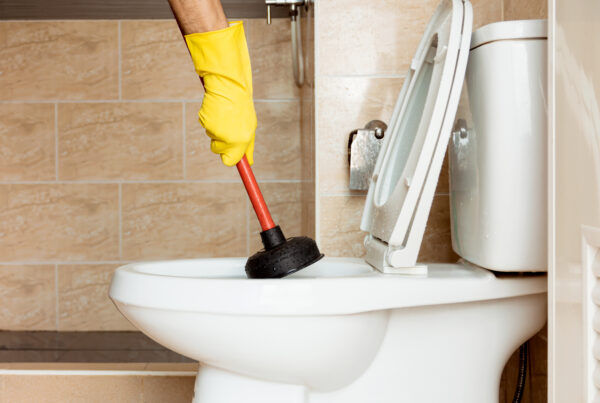What is a Pressure-Assisted Toilet and Why Would You Need One?
This type of toilet incorporates an airtight plastic tank within the porcelain tank where water is stored. Utilizing both water and pressurized air, it enhances the flushing water’s velocity, resulting in a forceful flush while consuming only about 1.1 to 1.4 gallons per flush (GPF). Moreover, the heightened water velocity aids in breaking down larger waste, eliminating the need for a larger trapway for effective functioning. Pressure-assisted toilets feature robust components and can endure up to 30 years with proper maintenance. Continue reading to explore more about pressure-assisted toilets, their mechanisms, and the advantages of these potent bathroom fixtures.
How Does a Pressure Assist Toilet Work?
Typical toilets rely on gravity for flushing. When activated, water from the tank falls into the bowl, creating a siphon effect that pulls waste down the drainpipe. But sometimes, this process fails, resulting in a clog.
In contrast, a pressure-assisted toilet, also known as a power flush toilet, features a sealed pressure tank containing air and water. As the tank fills, the trapped air compresses due to water supply line pressure. Upon flushing, this compressed air propels the water forcefully into the bowl, pushing waste out instead of relying on gravity’s pull.
How much force does this system generate? Pressure-assisted toilets can achieve peak flow rates of up to 70 gallons per minute. This increased flushing force enhances drainline carry, the distance waste travels through the drain pipe after flushing. While standard gravity toilets meet the American National Standards Institute recommendation of 40 feet, pressure-assisted toilets provide up to 60 feet of carry—a 50 percent improvement.
This added force enables toilets with pressurized systems to effectively clean the bowl with a single flush and significantly reduces the likelihood of clogs. Unlike gravity toilets, which may get obstructed, items that typically cause clogs are forcefully expelled down the drainpipe by a power flush toilet.
Power Flush Toilets Deliver Water Savings and More!
Pressure-assisted toilets not only excel in preventing clogs and minimizing maintenance calls but also offer a host of other advantages.
The first significant benefit is water conservation. Pressure-assisted toilets generally conserve between 0.2 to 0.5 gallons per flush, equating to approximately 4,000 gallons annually, thereby cutting down on water expenses and supporting conservation initiatives. In contrast, older gravity-flow toilets typically consume around 1.6 gallons per flush, surpassing the water usage of pressure-assisted toilets per flush.
The water savings can be substantial— for instance, a 356-apartment complex in Baltimore reported an average 57% decrease in daily water usage and a 46% decrease in water costs.
Moreover, the manager of these apartments estimated that the combined savings from reduced water consumption and fewer maintenance calls would yield a return on investment in less than 24 months from installation.
Another advantage of pressure-assisted toilets is their simplicity; they have fewer moving parts, and most of the serviceable components are easily replaceable.
Lastly, the enhanced flushing power of these toilets may contribute to cleaner toilet bowls, reducing the likelihood of visitors forming negative impressions during restroom visits.





